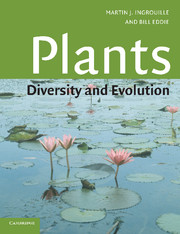Book contents
Chapter 4 - Sex, multiplication and dispersal
Published online by Cambridge University Press: 05 June 2012
Summary
flowers are … constrained by history: they have a phylogenetic burden. Many levels of their evolutionary history have imprinted their marks on them. They cannot escape them. One can often see traces of earlier phylogenetic (sub)strata in the structure of flowers. One should not forget that each flower, however harmoniously functioning at any time, is a mixture of features that are of different evolutionary ages. Different historical levels are incorporated and work together. The notion of ‘evolutionary tinkering’ is especially apt for flowers.
P. K. Endress, 1994The yin and yang of reproduction
The trio of sex, multiplication and dispersal are the pillars of the evolution of life on Earth. Multiplication comes through the processes of sex and dispersal but requires neither. Many organisms reproduce only, or mainly, asexually and have no special mechanisms for dispersal. For organisms living in water, dispersal was never much of a problem. Water currents dispersed them haphazardly. But dispersal on the land is a formidable challenge, a cliff that the first land colonists had to scale. The landscape was only patchily friendly and even if a foothold could be established the leap from one damp patch to another was a huge challenge. The plants that first met this challenge, and the structures they used to do it, their spores, provide the first record of complex terrestrial life. In colonising the land, plants transformed it making it an easier place for other colonists.
- Type
- Chapter
- Information
- PlantsDiversity and Evolution, pp. 135 - 190Publisher: Cambridge University PressPrint publication year: 2006



